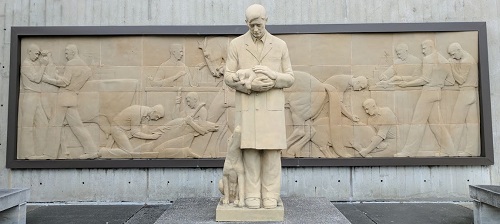
About the Art
The College of Veterinary Medicine houses the most recognized symbol of veterinary medicine throughout the US and the world, which can be seen in the Veterinary Quadrangle on Iowa State University’s campus. The Veterinary Medicine Mural is carved terracotta in bas-relief style. The Gentle Doctor sculpture is cast in terracotta. Together the mural and sculpture illustrate the technical skills and emotional intelligence required to be a veterinarian.
Working with the ceramic engineering department in the 1930s, Petersen developed a way of casting terracotta in sections to piece together The Gentle Doctor to create the final statue. Petersen never intended for The Veterinary Medicine Mural to be seen on its own and as a result, this sculpture was also created with the two artworks fully completed in 1938. Iowa State Daily noted that Petersen wanted the two works to be conjoined, as separate, their meanings differed. With The Gentle Doctor placed in front of The Veterinary Medicine Mural, the viewer can see the statue from all angles, taking in the story of the wounded puppy and its mother looking up at her child in concern. The mural then acts as a backdrop, seen from straight on, and carved in bas-relief accentuating the figures and animals in the storyline.
The central figures (covered by The Gentle Doctor) of the tall horse and the man holding him dominate the mural. The spirited horse with its stylized short mane reminds the viewer of a Trojan horse. According to Lea Rosson DeLong, “flexing his muscles and bending his head down sharply … seems to be a 20th century incarnation of the horses and centaurs who paraded and fought across the pediments of the Parthenon” (p. 47, Christian Petersen, Sculptor, Iowa State University Press, 2000).
According to the The Living New Deal, “The original [The Gentle Doctor] terracotta sculpture sustained weather damage over time and was recast in bronze. It now stands on the main floor of the Scheman Building and the reproduction in bronze is located at the Veterinary Medicine Building [along with the mural].”
About the Artist
Danish-American sculptor Christian Petersen (1883-1961) was Iowa State University’s sculptor-in-residence from 1934 to 1955. During his 21 years as a working teacher-artist, he pioneered hands-on sculpture classes and art appreciation for beginners at a land-grant agricultural college. Peterson’s work enhanced the lives of students, faculty, and area residents for decades thereafter. He created 12 major public installations and 38 sculptures for the ISU campus.
In 1940, Christian Petersen attended the Story County, Iowa, cornhusking contest, where he saw Marion Link husk 70 ears of corn in one minute. Petersen was so impressed with the 24-year-old farmer that he immediately went home and made the first model for his sculpture Cornhusker. Link went on to win the Iowa State championship, cleaning more than 3,000 pounds of corn in 80 minutes.
The Cornhusker and examples of other Petersen sculptures follow.

Cornhusker, 1941, Smithsonian American Art Museum, Washington, D.C.
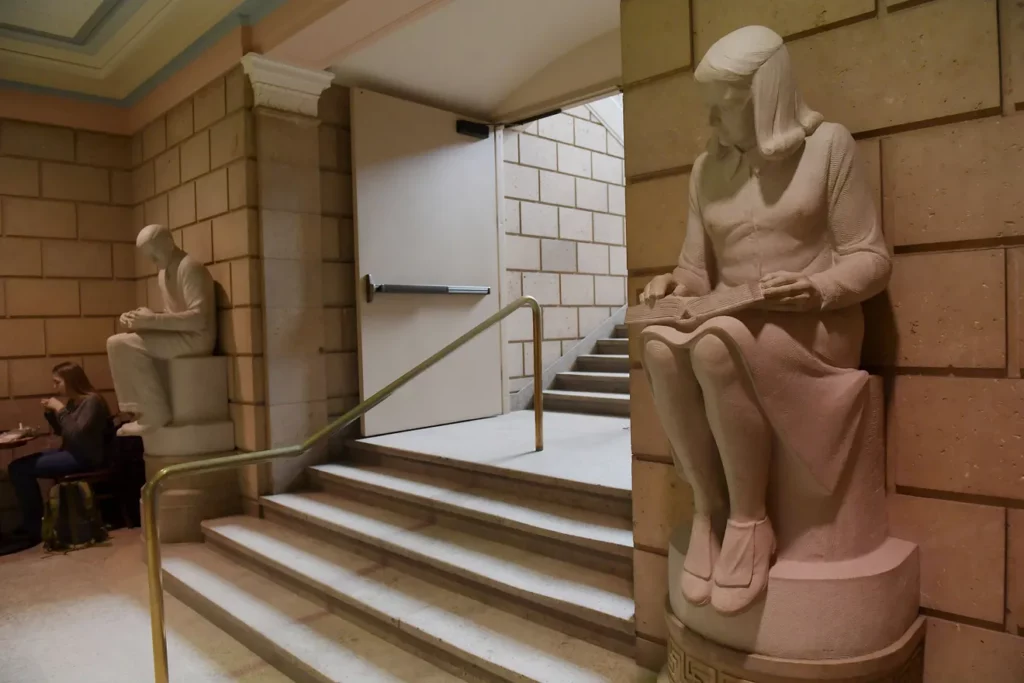
Library Boy and Girl, 1944, located inside the original lobby of Parks Library, Ames, Iowa
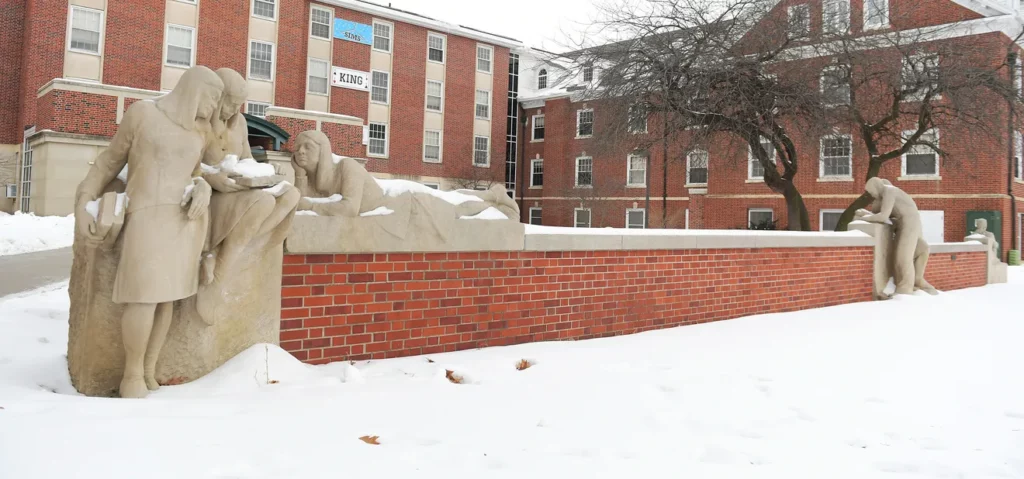
Conversations, 1947-1953, located in the south side courtyard at Oak Hall, Ames, Iowa
Christian Peterson created more than 1,250 known works of art throughout his career.
For additional art by Christian Peterson, please visit Fountain of the Four Seasons.
Relevant Terminology/History
Veterinary Medicine is the branch of medicine that deals with the prevention, management, diagnosis, and treatment of disease, disorder, and injury in animals. Veterinary medicine also encompasses animal rearing, husbandry, breeding, nutrition research, and veterinary product development. The scope of veterinary medicine is wide, covering all animal species, both domesticated and wild, with a wide range of conditions that can affect different species.
The Rod of Asclepius also known as the Staff of Aesculapius is a serpent-entwined rod wielded by the Greek god Asclepius, a deity associated with healing and medicine. It was believed to be able to cure a patient or a wounded person just by touch. In the modern context, it is the predominant symbol for medicine, health care, and The American Veterinary Medical Association (AVMA). The symbol has been adopted and altered to be the true recognized veterinary symbol by the addition of a letter “V” placed over the serpent-entwined rod. It is held as a symbol of hope and triumph over illness by the veterinary profession.
The caduceus is the traditional symbol of Hermes (the messenger god) and features two snakes winding around a winged staff. In the United States, since the late 19th and early 20th century, it has been used as a symbol of medicine, despite its ancient connotations. Today, the US Army Medical Corps Branch utilizes the caduceus for their medical officer uniforms, plaque, and the flag of the Surgeon General of the United States Army.


Images courtesy of Wikipedia
Bas-Relief (pronounced bah-relief) stems from the Italian phrase basso-relievo, which directly translates to low relief. Artists create a bas-relief by sculpting onto a 2-D plane to create and accentuate figures and objects, producing a 3-D appearance that can be viewed from all angles with little distortion.
The three images below illustrate the differences types of relief: bas-relief; high relief; and sunken relief.
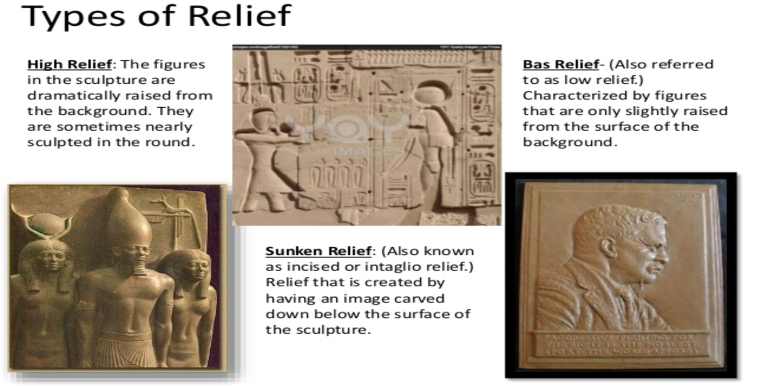
Quote: “Aggressive fighting for the right is the noblest sport the world affords.”
Courtesy of Getty Images
The Trojan Horse was the wooden horse used by the Greeks during the Trojan War to enter the city of Troy. This tactic began when the Greeks pretended to sail away, and the Trojans took the horse and brought into their city as a victory trophy. The Greek soldiers, who were hiding in the horse, crept out and opened the gates of the city while the rest of the Greek army sailed back under the cover of darkness. The Greeks destroyed the city and won the war.
Metaphorically, a Trojan Horse refers to the deception and strategy that results in getting a target to willingly allow the enemy into a secure place.
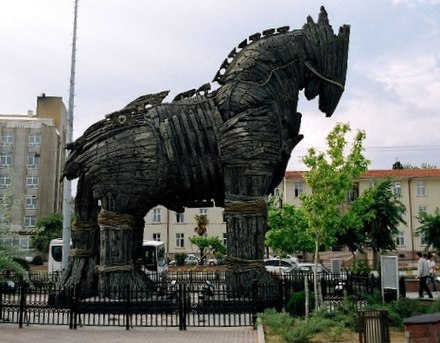
Replica of Trojan Horse in Turkey, the modern-day location of the city of Troy, photo courtesy of Wikipedia
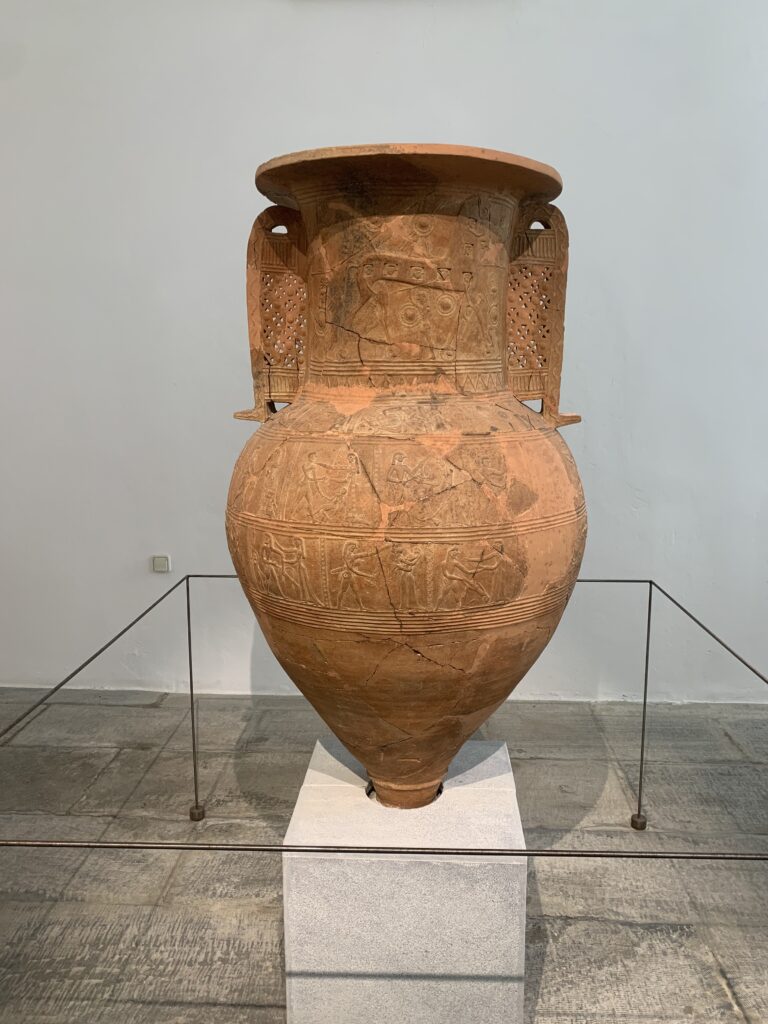
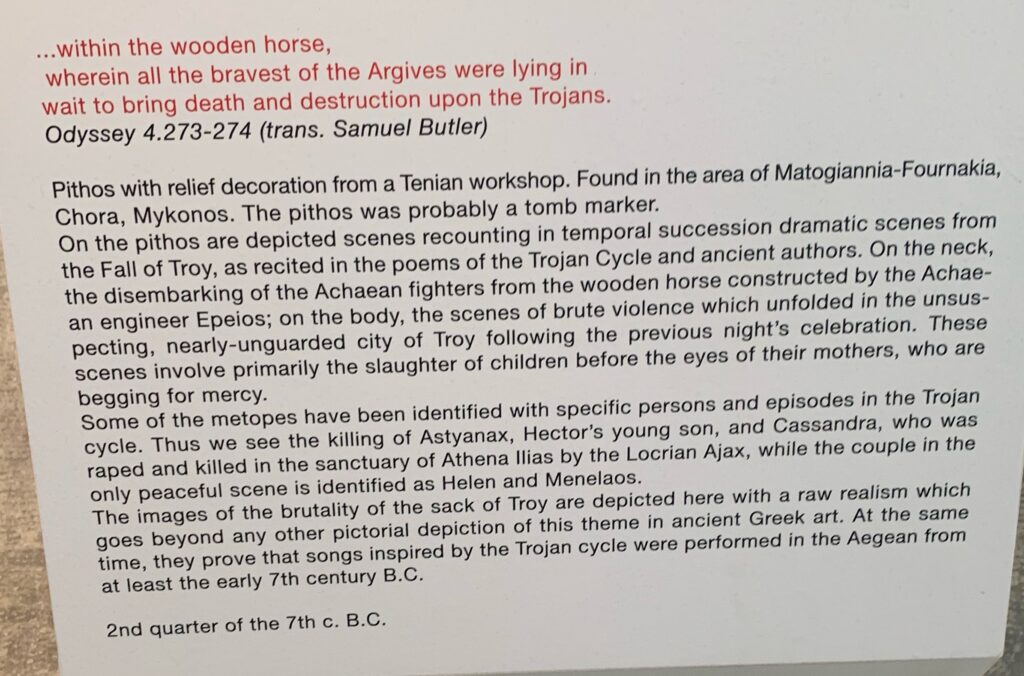
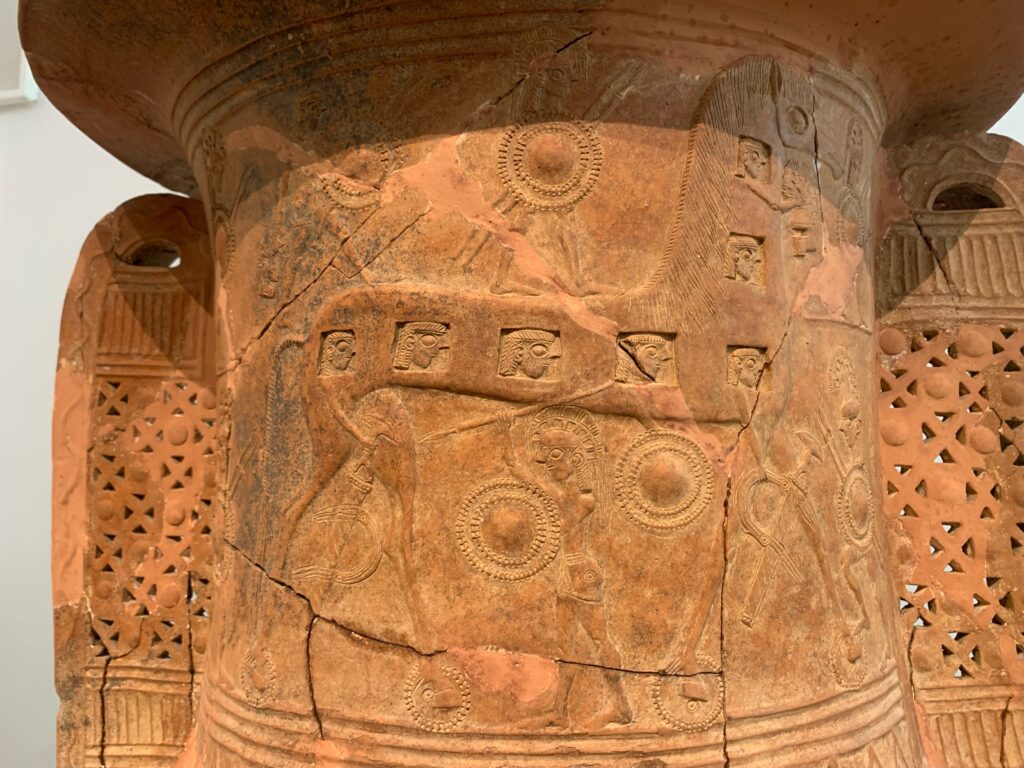
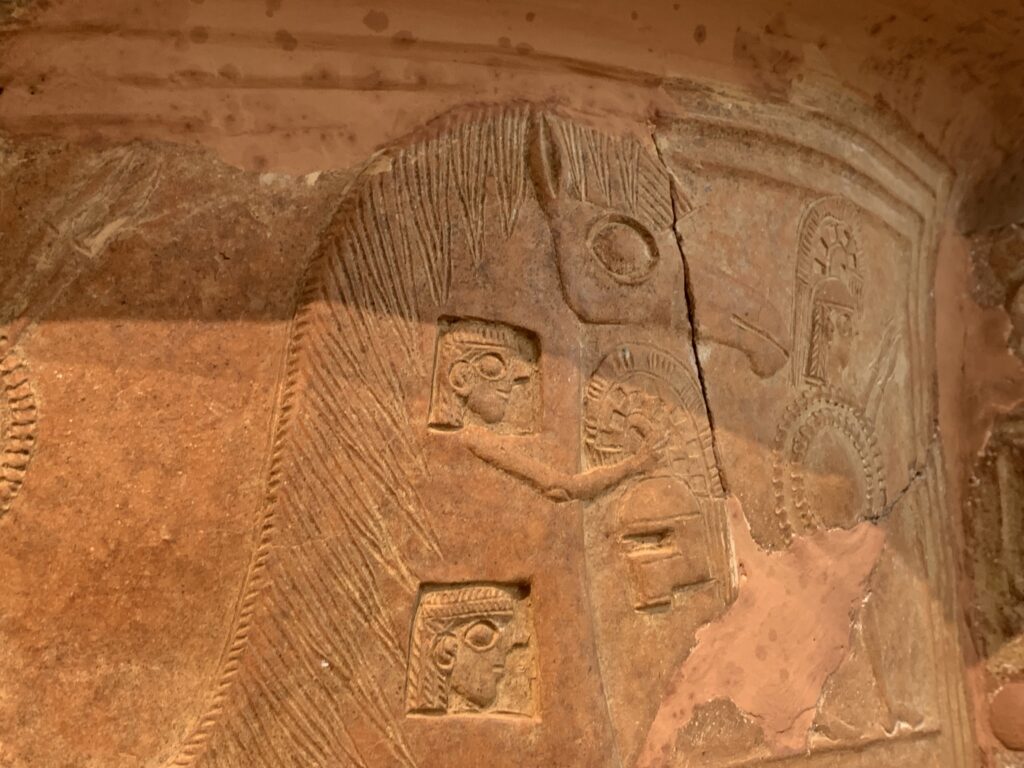
Trojan Horse carved on clay vessel, 7th century BCE. Archaeological Museum of Mykonos, Greece, photos courtesy of Dr. Klemm from her visit to Mykonos in October 2022.
The carved vessel depicts the Trojan Horse with Greek soldiers hiding inside.
Parthenon is the temple on the Athenian Acropolis in present-day Athens, Greece. It was dedicated to the goddess Athena during the fifth century BC. Its decorative sculptures are considered some of the high points of classical Greek art, an enduring symbol of ancient Greece, democracy and western civilization. The temple contains a continuous frieze in bas-relief around the cella and across the lintels of the inner columns; the metopes and pediment were carved in high relief. The following diagrams illustrate the sections of Parthenon.
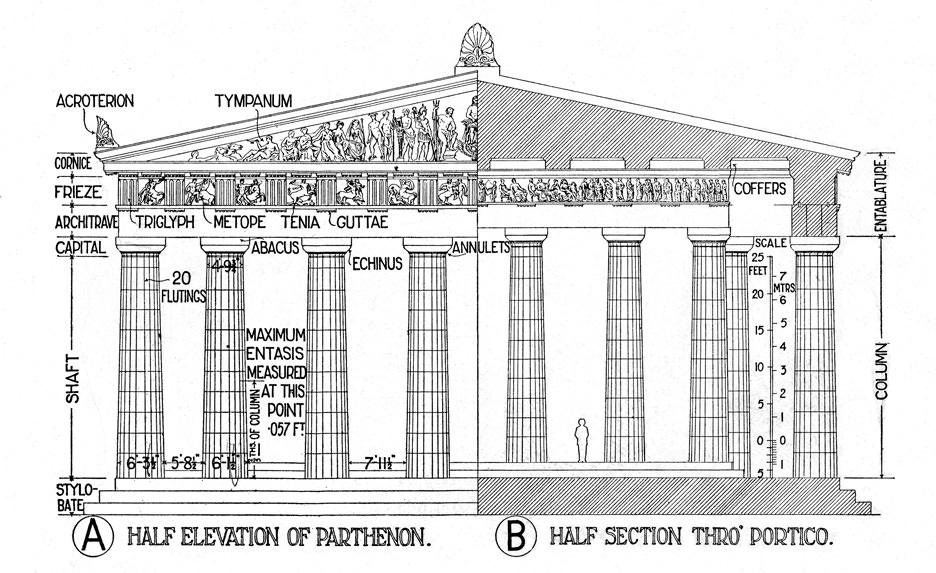

Images courtesy of World History Encyclopedia
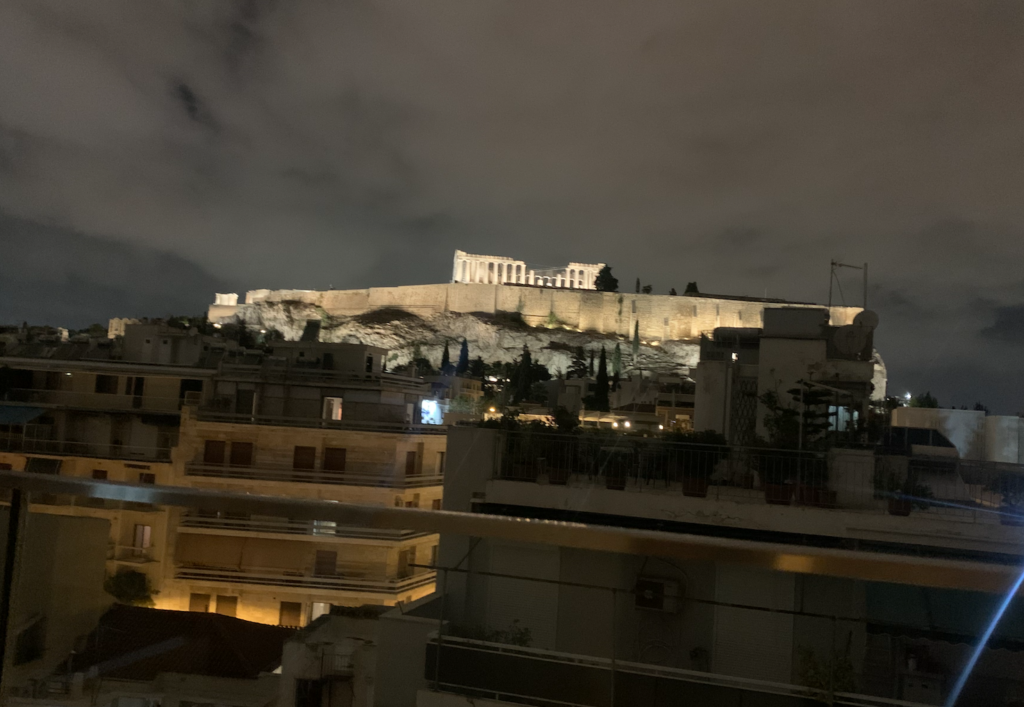
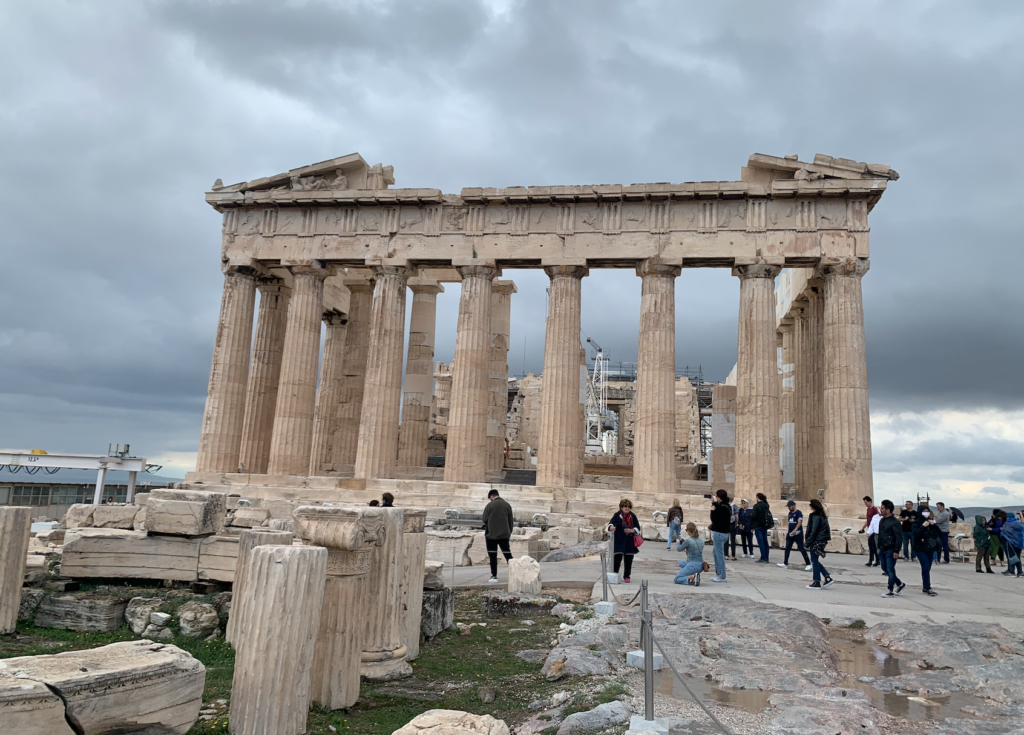
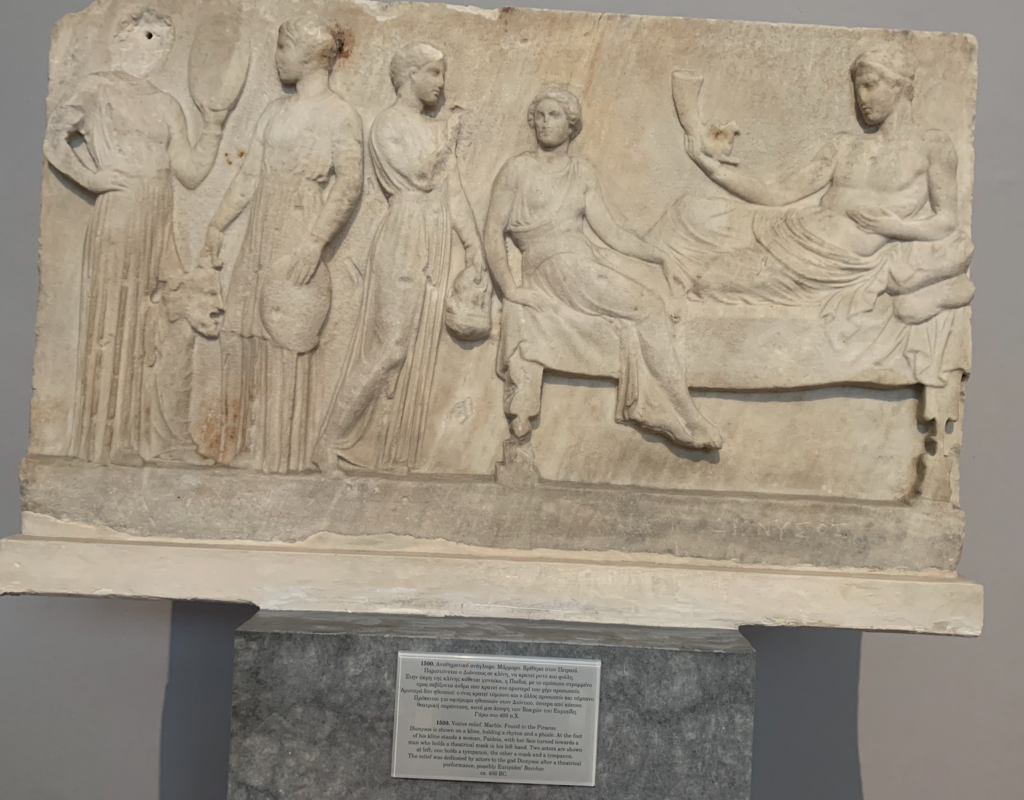
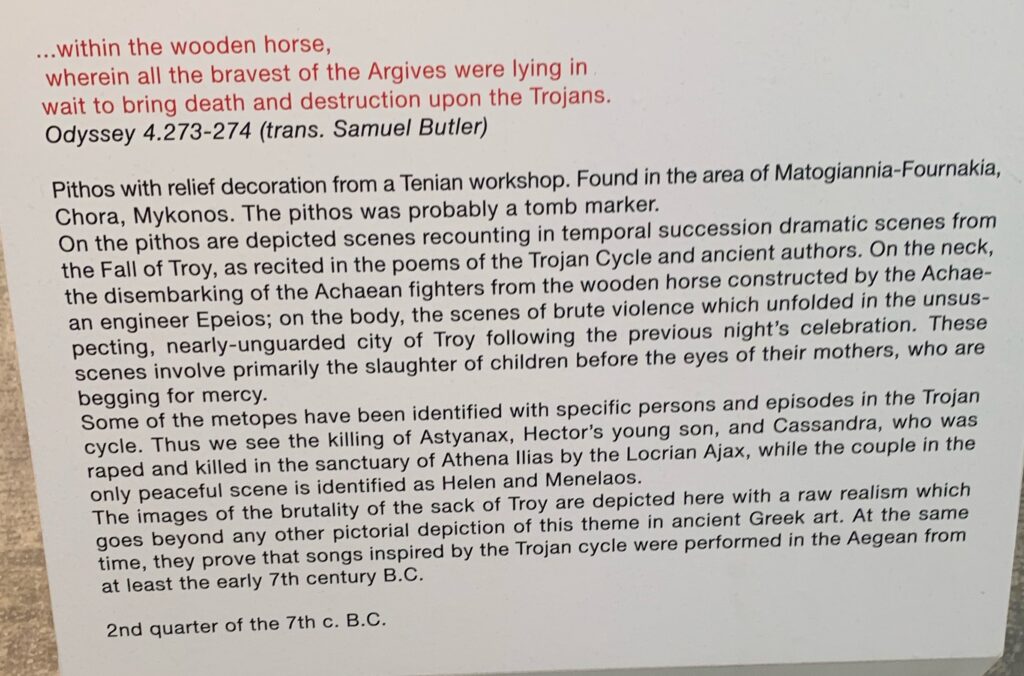
Images courtesy of Dr. Klemm of the Parthenon and bas-relief sculpture in the Acropolis Museum taken on her trip in October 2022.
*Fun Fact: Iowa State established the first public veterinary school in the nation in 1879, and is still innovating with excellence in professional practice and research.
Learning Guide

- What do you think the title has to do with the art?
- Why do you think Number Character 0 is talking to the reader?
- How does the shape of the red image with the white numbers relate to the art?
- How does the hidden blue image relate to the art?
- What material is terracotta made from? Hint: What does “terra” mean?
- Have you ever taken a pet to the vet? If so, did the vet address the pet by their name? Why would they want to know their name?
- Would your local vet be able to provide health care for a large farm animal? Why or why not?
- How many ears of corn can you husk in one minute?
- What are the images showing the difference between the three types of relief? Can you name any of the ancient cultures? What person does the bas-relief image remind you of?
- What is the difference between caduceus and the staff of the Rod of Asclepius?
- What was the famous characteristic of Helen of Troy?
- Can you see the people carved in the vessel of the Trojan Horse? What were they waiting to do? How many do you see?
- When were the Trojan Wars?
- Look at the diagrams of the Parthenon. What do you think the dots refer to in the right diagram? How many dots are there on the top, bottom, right side, and left side? Any thoughts about symmetry in the design?
- What is the material of the relief sculpture from the Acropolis Museum?
